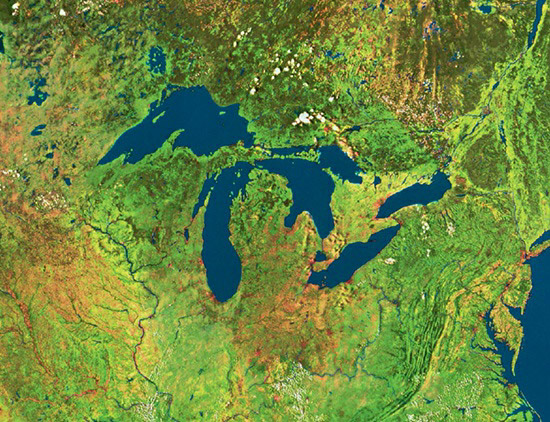The Great Lakes of North America, encompassing Lakes Huron, Ontario, Michigan, Erie, and Superior, stand as a monumental natural wonder. They are the largest group of freshwater lakes on the planet by surface area, spanning an area comparable to the combined size of the U.S. states of Pennsylvania and Ohio. In terms of volume, they are the second-largest globally, rivaling Siberia’s Lake Baikal, which holds nearly 20% of the world’s freshwater.
Geologists attribute the formation of the Great Lakes to two ancient rifts in the North American plate: the mid-continental rift about 1 billion years ago and the St. Lawrence rift around 570 million years ago. These rifts created faults and valleys, which were further shaped by glaciation over millennia. As the last Ice Age retreated around 12,000 years ago, the melting glaciers filled these basins, giving rise to the Great Lakes we know today, approximately 10,000 years ago.
Beyond their sheer size, the Great Lakes function like inland seas, with their own ecosystems, rolling waves, strong currents, and significant weather patterns. They particularly influence local climates through the phenomenon of “lake effect” snowstorms. These occur when cold winds moving across the warmer lakes pick up moisture, which then condenses into heavy snowfall upon reaching colder land. This effect can result in impressive snow accumulations, sometimes several feet in a single day, impacting areas downwind of the lakes. The Great Lakes, thus, are not only a critical freshwater resource but also a significant meteorological and ecological feature of North America.

